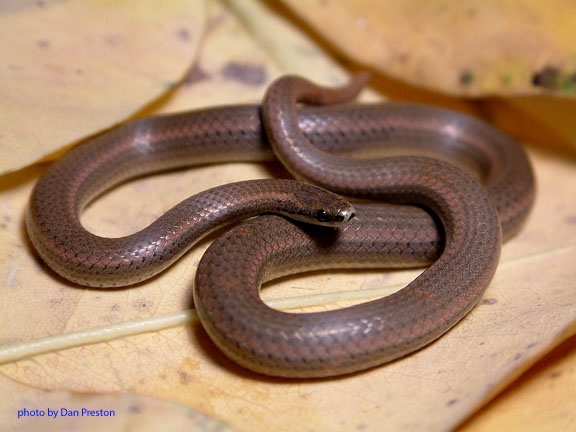Being one of the smallest snake species in the North Coast, the Sharp-tailed Snake (Contia tenuis) is easily overlooked, and sometimes the backyard gardener thinks it just an earthworm of some kind. The sharp-tailed snake is usually associated with oak woodlands over much of its range, but can also be found in coniferous forests, open pine forests, and chaparral brushlands. Small in size, as you can see from this photo of one on a madrone tree leaf, adults typically only reach 8 to 12 inches in length, and juveniles can be only 3 to 8 inches in length.
The food for this snake consists almost entirely of small slugs, and reported observations from captivity note that the hard, sharp-pointed tail spine is used as an anchoring hook in the substratum when a captured slug attempts to pull away to escape the snake's grasp. Little is known about the reproduction of this species, but preliminary data shows that the female lays one to five eggs in early summer and they hatch in late summer/early fall.
Herpetologists (those who study reptiles and amphibians) from Oregon have taken notice of certain individuals from the forested mountains of southwestern Oregon and northern California (around the Siskiyou Mountain range) have much longer tails and different scaling on the tails and these may actually be a soon-to-be-recognized different species of snake than the typical sharp-tailed snake. The "normal" sharp-tailed snake is secretive but fairly common at the UC Hopland Research & Extension Center.
